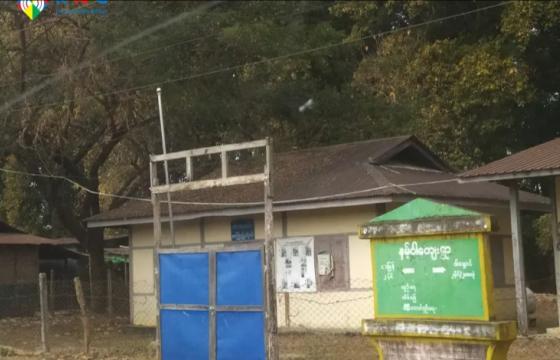To ensure that flood damage is minimized this year in Hpakant, Kachin State, locals have demanded that the government enforce existing regulations around the annual cleaning of sediment from the Uru stream.
A government-sponsored cleaning committee is in charge of the initiative this year, but for the last five years, companies involved have been accused of adding soil back into the Uru stream—known as Uru Hka in Jinghpaw—causing flooding in Hpakant every year.
“We want the committee to clean the Uru Hka by following international standards. We want the government to demand it [be carried out this way],” Ja Naw, who lives near the stream in Maw-one Ward-5 in Hpakant, told KNG. “Companies used to say that the flooding was a natural disaster. I think it’s a man-made disaster. Regulations do not allow companies to put soil [closer than] 500 feet from the Uru stream. I have seen that companies do not follow the regulations. I think the government’s officials need to be systematic and strict with it.”
According to locals, more than 100 houses in Lon Khin, Maw-one, Nyet-pyaw-taw and Aye Mya Thaya wards have to cope with flooding every year as a result of the activities around the Uru stream.
Gawat Htawng Yang, who lives in Nyet-pyaw-taw ward, has suffered as a result.
“It’s inconsistent flooding. For instance, the floods were four feet high last year, but the flooding is five feet high this year,” Gawat Htawng Yang told KNG. “Whenever there is flooding, we have to move our house up. As a result, the strength capacity of our house has gotten lower. For poor people, they cannot move their houses up every year. Government and companies don’t come to see us when there is flooding. If our house is completely flooded and we want to fix it, we have to seek permission from the municipal department. We can fix our house after we receive permission from them,” she explained.
Private companies typically cleaned the Uru stream in the past, but under the direction of the Union government, the Kachin State government is managing the cleaning this year.
“Companies group used to clean the Uru steam in the past. Many people saw that it wasn’t effective, because they took mud out from the stream and put it on the riverbank. It goes back into the stream when the rain comes,” Dashi La Seng, Kachin State minister of natural resources and the environment, told KNG. “That’s why we are taking lessons from previous years and we are planning to clean the Uru stream [ourselves] this year. We will put the mud a little bit far from the stream. We will work on it systematically,” he added.
The process, which operates under the Hpakant Area Rehabilitation Program, will begin from Nam Maw, Pauwa and the Lon Khin area.
There are five working groups focused on the stream cleaning project. Officials from the General Administration Department, municipal committee, environmental preservation groups, the Jade Businessman Association, the rural development department, township police, parliamentarians, and local civil society groups will cooperate with the committee.







